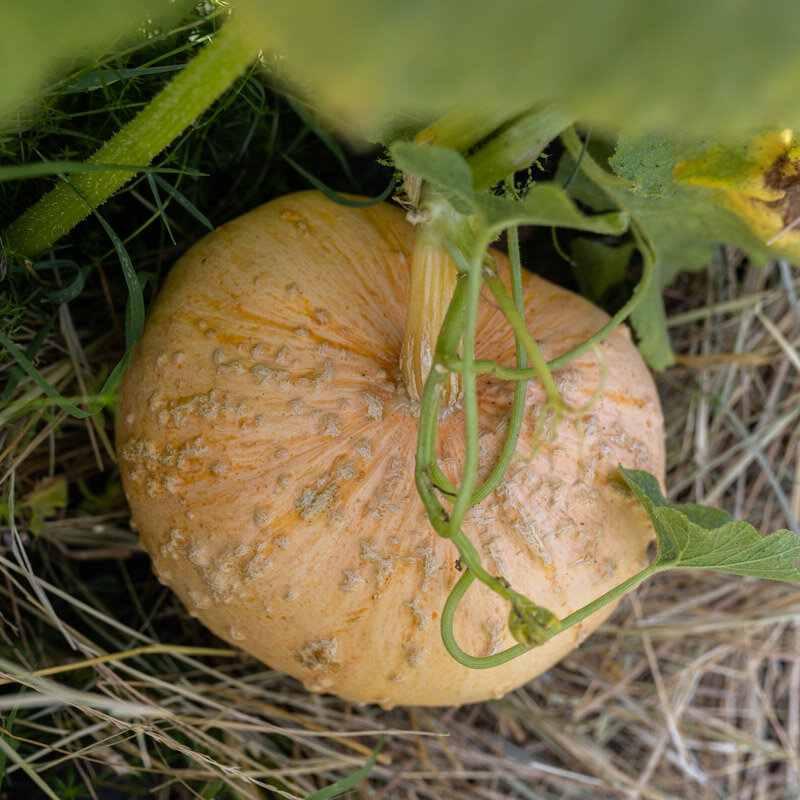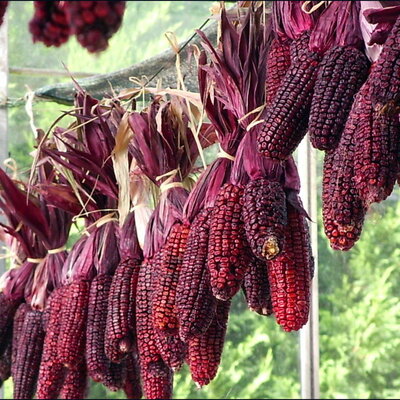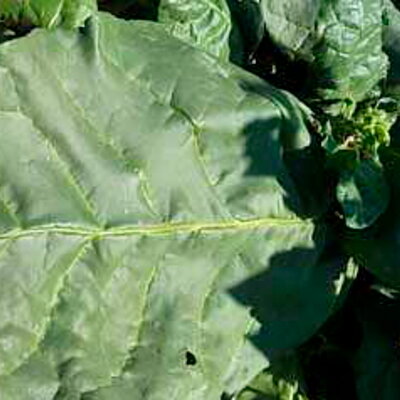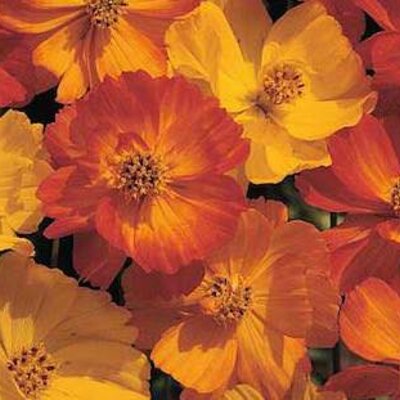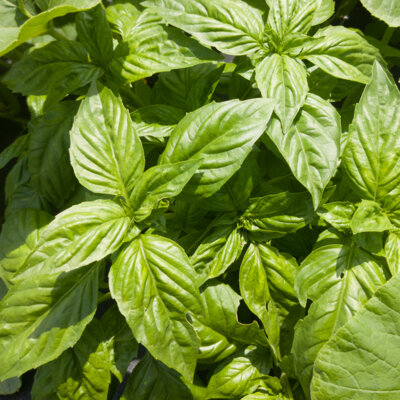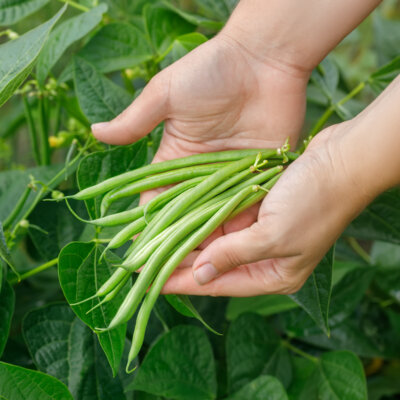Giraumon Galeux d'Eysines - Maxima squash
Giraumon Galeux d'Eysines is an ancient variety that produces beautiful salmon-pink fruits with gray to beige excrescences on the skin. Their yellow-orange flesh has a very sweet taste. The fruits are highly decorative, suitable for making soups, and keep for up to 6 months.
Description of Giraumon Galeux d'Eysines squash
Giraumon Galeux d'Eysines, Cucurbita maxima, is an ancient variety native to the Bordeaux region of France. It is mentioned in Vilmorin-Andrieux's 1885 book Les Plantes Potagères. This runner variety produces round, slightly flattened fruits with salmon-pink skin covered with gray to beige excrescences. In the United States, it is also called "Peanut Pumpkin" because of its protuberances. Its thick, firm and very sweet orange flesh is of excellent quality, and can be enjoyed in vegetable soups, purées and au gratin. Squash flowers are also edible.
Scabious squash seedlings
Giraumon Galeux d'Eysines squash is sown in pots 2 to 3 weeks before transplanting, from March to May, in bunches of 2 to 3 seeds.
Place seedlings under a light shelter, at a temperature of between 18 and 20°C, and keep the substrate moist until the seeds emerge. Be careful not to sow squash seeds too early in the season, in which case the roots will become fibrous, making growth difficult in the garden. Transplant into the vegetable garden once the last frosts have passed.
From April to June, after the last risk of frost, it is possible to sow directly in the garden in 2 to 3-seed stacks.
Prepare 2 weeks in advance holes filled with compost or organic matter, spaced 2 m apart in all directions, to accommodate the squash plants or seeds. Mulch the soil to maintain sufficient humidity and limit water evaporation.
Next to the scabby squash, we recommend sowing corn and beans, giving rise to the "three sisters" or milpa crop. Basil plants can also be planted to repel pests.
Harvesting scabby squash
Although the fruits of the Giraumon Galeux d'Eysines squash can be harvested and eaten immaturely, those intended for winter storage should be picked as late as possible, before the first frosts, from July to November, when the stalk starts to dry out and the skin becomes thick. Be careful not to tear them off, but cut as close as possible to the stem, 10 cm above the stalk.
While its flamboyant flesh can be enjoyed in many recipes, this variety of squash has a shelf life of around 6 months. However, the fruit can be stored in a dry, well-ventilated room, at a temperature of between 10 and 12°C. They should be spaced out, with the tails facing upwards, in high crates. They can also be frozen for up to a year, after being sliced and cooked.
In the kitchen, they're the perfect squash variety for soups and sweet pie recipes. For a creamy vegetable velouté, add potatoes, leeks and carrots to the recipe.
These products may also be of interest to you
in bucket, in the ground
Sow in pots at 18-20°C, 2 to 3 weeks before planting. Transplant with the root ball into the ground, after the last frosts, at a minimum distance of 2 m in all directions. To sow directly in the ground, sow after the last frosts, once the soil has warmed up. In both cases, prepare holes filled with compost or organic matter two weeks in advance to accommodate your seedlings or seeds.
March, April, May
April, May, June
July, August, September, October, November
in the ground
sunny
fort
humus
rich, heavy, furniture
Cucurbita maxima
mid-season
From 5000 to 10000 g
12 seeds
flat
farm
Orange
edible
From 150 to 400 cm
From 20 to 40 cm
runner
France
1885
"Vilmorin-Andrieux "Les Plantes Potagères
This old variety is mentioned in Vilmorin-Andrieux's 1885 book "Les Plantes Potagères".



